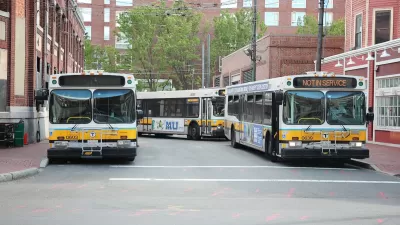Millennials have been clustering in urban hotspots, and millions of others will be settling down over the next decade. William Fulton advises less attractive cities and suburbs on how to avoid a brain drain.
The migration trend of millennials is "to a small number of hip metro areas (D.C., San Francisco, Seattle) and smaller cities (Boulder, Colo.; Missoula, Mont.; Palo Alto, Calif.) around the country and hip employers follow them," writes Fulton. "The result is an upward cycle of talent and jobs and business growth in the fashionable places, and a downward cycle everywhere else."
Even Boston, "which has the greatest concentration of universities in the country, lots of cool neighborhoods and a big chunk of the innovation economy" is facing an outmigration, though the problem there is primarily one of cost, not lack of appeal. Experts say that Boston "needs more starter homes in interesting, transit-rich locations," but this will be an easier feat for Boston than for other less attractive cities and suburbs.
Fulton explains, "So if you're not one of the hip places today, you have only a few years -- the length of one real estate cycle and the time horizon for planning an infrastructure project -- to become hip enough to keep your kids and attract others." He acknowledges that "[t]his might seem like a daunting, if not insurmountable challenge," but he points out that second-tier cities like Omaha, Neb.; Oklahoma City; Richmond, Va.; Syracuse, Buffalo and Rochester, N.Y.; and Manchester, N.H. have been successful.
"Most people -- even millennials -- want to live near their families and near where they grew up," concludes Fulton, "meaning that if you can create interesting places, they're likelier to stay. And you don't need the endless hip urban fabric of New York or D.C. to compete. You just need a few great neighborhoods for people to live and work in. For most cities, that's an achievable goal."
FULL STORY: Do Millennials Want to Call Your City ‘Home’?

Alabama: Trump Terminates Settlements for Black Communities Harmed By Raw Sewage
Trump deemed the landmark civil rights agreement “illegal DEI and environmental justice policy.”

Study: Maui’s Plan to Convert Vacation Rentals to Long-Term Housing Could Cause Nearly $1 Billion Economic Loss
The plan would reduce visitor accommodation by 25% resulting in 1,900 jobs lost.

Why Should We Subsidize Public Transportation?
Many public transit agencies face financial stress due to rising costs, declining fare revenue, and declining subsidies. Transit advocates must provide a strong business case for increasing public transit funding.

Paris Bike Boom Leads to Steep Drop in Air Pollution
The French city’s air quality has improved dramatically in the past 20 years, coinciding with a growth in cycling.

Why Housing Costs More to Build in California Than in Texas
Hard costs like labor and materials combined with ‘soft’ costs such as permitting make building in the San Francisco Bay Area almost three times as costly as in Texas cities.

San Diego County Sees a Rise in Urban Coyotes
San Diego County experiences a rise in urban coyotes, as sightings become prevalent throughout its urban neighbourhoods and surrounding areas.
Urban Design for Planners 1: Software Tools
This six-course series explores essential urban design concepts using open source software and equips planners with the tools they need to participate fully in the urban design process.
Planning for Universal Design
Learn the tools for implementing Universal Design in planning regulations.
Smith Gee Studio
Alamo Area Metropolitan Planning Organization
City of Santa Clarita
Institute for Housing and Urban Development Studies (IHS)
City of Grandview
Harvard GSD Executive Education
Toledo-Lucas County Plan Commissions
Salt Lake City
NYU Wagner Graduate School of Public Service





























